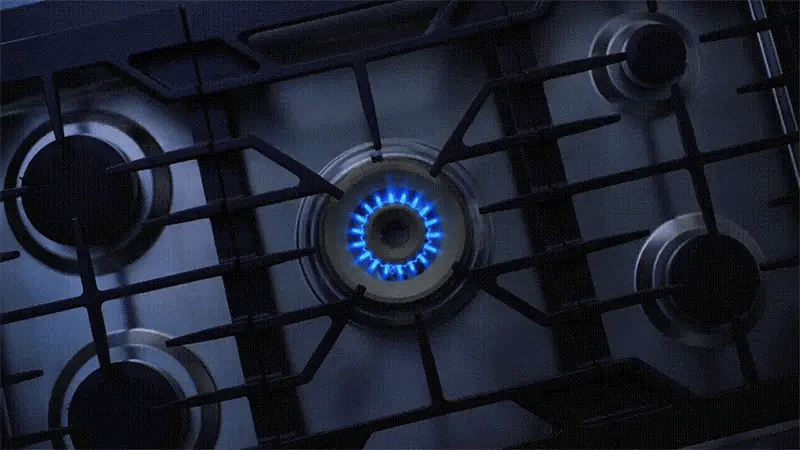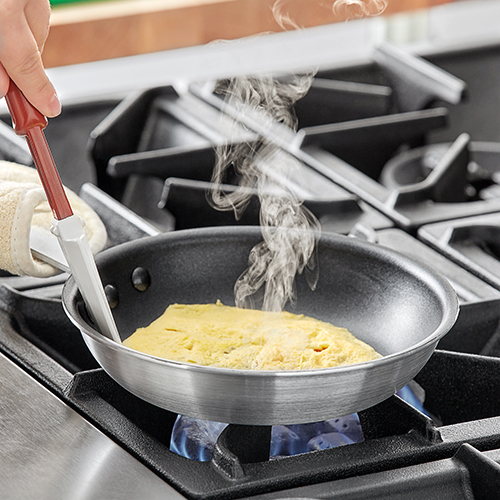
Explanation of equipment BTU ratings
Share
What is a BTU?

BTU, or British Thermal Unit, is a standard measurement used to quantify the amount of energy required to raise the temperature of one pound of water by one degree Fahrenheit. In the context of commercial equipment, BTU ratings indicate the heating or cooling capacity of appliances such as stoves, ovens, refrigerators, and Air conditioning units . Understanding BTU ratings is crucial for selecting equipment that can efficiently meet the heating or cooling needs of a kitchen or commercial establishment.
Why are BTUs important?
BTU ratings are crucial when selecting commercial cooking equipment. Equipment with BTUs that are too high can lead to energy waste and potential safety hazards. Equipment with BTUs that are too low may not be able to meet the demands of a busy kitchen, resulting in slower cooking times and decreased efficiency. It is important to consider the optimal BTU rating for each piece of equipment to ensure optimal performance and efficiency. energy conservation in a commercial kitchen environment.
BTU and recovery time
A key aspect to consider is the equipment's BTU rating in relation to its recovery time. Recovery time refers to the equipment's ability to return to its operating temperature after a sudden drop caused by the addition of cold ingredients or frequent door openings. Equipment with higher BTU ratings generally has a faster recovery time. For example, a high BTU range can quickly recover its temperature after searing a large batch of meat or boiling a large pot of water. This is essential in a busy commercial kitchen where efficiency is paramount.
Conversely, equipment with lower BTU ratings may have a slower recovery time, leading to longer wait times between batches or dishes. This can impact your kitchen's overall productivity and result in slower service during peak hours. It's important to match your equipment's BTU rating to your kitchen's specific needs. For high-volume operations, investing in equipment with higher BTU ratings and faster recovery times can help maintain a smooth workflow and effectively meet customer demand.
BTU gas range

The BTU rating of a gas stove is a crucial factor to consider when selecting the right equipment for your kitchen. BTU ratings indicate the amount of heat output a gas stove can provide, which influences its efficiency and cooking performance.
Commercial gas stoves Typically, they have BTU ratings ranging from 20,000 to 60,000 BTUs per burner. Higher BTU ratings mean the burners can generate more heat, allowing for faster cooking times and the ability to handle larger quantities of food. This is particularly beneficial for busy kitchens that need to prepare meals quickly and efficiently.
When choosing a gas range for your commercial kitchen, it's important to consider the type of cooking you'll be doing. For high-volume cooking or tasks that require rapid heat-up, such as frying or searing, a gas range with higher BTU ratings between 20,000 and 60,000 is recommended. On the other hand, if you primarily cook lightly or simmer, a lower BTU rating between 10,000 and 20,000 may be sufficient.
How to Calculate Total BTU for Gas Range

To determine the range's total BTU output, simply add up the BTU ratings of each burner. For example, a gas range with four burners, each rated at 30,000 BTUs, will have a total output of 120,000 BTUs. This higher total BTU output can be beneficial for cooking multiple dishes simultaneously or for handling large pots and pans .
- 1 burner: 20,000 to 30,000 BTU
- 2 burners: 40,000 to 60,000 BTU
- 3 burners: 60,000 to 90,000 BTU
- 4 burners: 80,000 to 120,000 BTU
- 5 burners: 100,000 to 150,000 BTU
- 6 burners: 120,000 to 180,000 BTU
- 7 burners: 140,000 to 210,000 BTU
- 8 burners: 160,000 to 240,000 BTU
Equipment BTU Ranges
Below, we cover the most common cooking equipment and their BTU ratings to help you choose the best products for your business.
- Gas range: 20,000 to 60,000 BTUs per burner
- Deep fryer: 70,000 to 210,000 BTUs per hour
- Pizza oven: 20,000 to 100,000 BTUs per hour
- Convection oven: 40,000 to 50,000 BTUs per hour
- Broiler chickens: 40,000 to 110,000 BTUs per broiler chicken stack
- Spit: 20,000 to 40,000 BTUs per burner
- Iron: 25,000 to 30,000 BTUs per linear foot
- Wok range: 70,000 to 120,000 BTUs per burner
Hood BTU Requirements

In addition to selecting the right equipment for your kitchen needs, it is essential to consider how the BTU output of your appliances affects the cooking requirements. the hood . The BTU rating of an appliance determines the size and capacity of the ventilation hood needed to effectively remove heat, smoke, and grease from the cooking area.
For gas appliances, the higher the BTU output, the more heat is generated during operation. This means that high-BTU appliances, such as stoves, griddles, and deep fryers, require larger hoods with higher exhaust rates to effectively capture and remove excess heat and grease produced during cooking.
Commercial kitchens must comply with local building and fire codes, which often specify minimum exhaust rates and hood sizes based on the total BTU output of the cooking equipment in use. Failure to comply with these requirements can result in poor indoor air quality, increased fire risk and possible fines or penalties. To determine the appropriate hood requirements for your kitchen, calculate the total BTU output of all gas-fired equipment that will be in use simultaneously. This information can help you select the correct hood size, exhaust rate, and filtration system to maintain a safe and comfortable working environment for your staff.
Frequently Asked Questions about BTU
Here are answers to some of the most common BTU questions you may have:
BTU vs Watts
When comparing BTUs to watts on commercial equipment, it is important to understand the distinction between the two units of measurement. BTUs (British Thermal Units) measure the amount of heat generated or removed, while Watts measure the rate of energy consumption or production . In commercial settings, BTU ratings are commonly used to determine the heating or cooling capacity of equipment, such as stoves, irons, and refrigeration units, while watts are often used to quantify the energy consumption of household appliances. If you're looking to compare the output of an electric unit versus a gas unit, 1 watt equals 3.41 BTU per hour .
Propane vs. Natural Gas Outlet
Most gas-powered equipment Natural gas heaters will be available in either natural gas or propane . These types of gas have different BTU capacities. Propane contains around 2,516 BTUs per cubic foot, while natural gas contains around 1,030 BTUs per cubic foot. This means that propane has a higher energy content and can generate more heat per unit volume compared to natural gas. When selecting equipment that uses propane or natural gas, it is crucial to consider the BTU ratings to ensure optimal performance.
BTU Chart
Use this helpful BTU chart to understand the BTU outputs of your cooking appliances:
By knowing the BTU output of your appliances, you can ensure efficient operation in your commercial kitchen. Higher BTU ratings indicate more powerful equipment, suitable for high-volume cooking, while lower BTU ratings are ideal for smaller operations. Consider your kitchen's specific needs when comparing BTU ratings to make informed decisions that will benefit your business in the long run.


